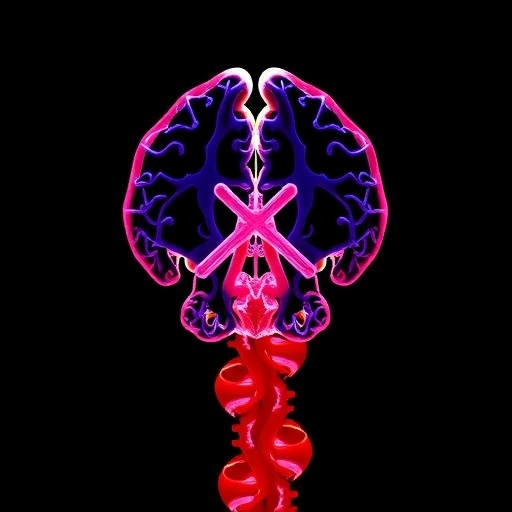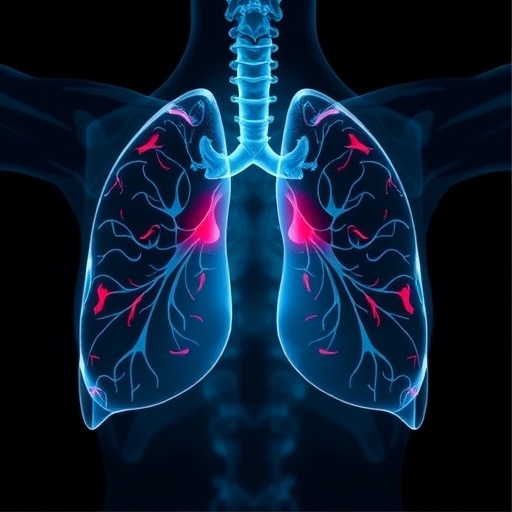
In a groundbreaking study that has generated significant interest in the field of regenerative medicine, researchers Rajendran Nair and colleagues have made remarkable progress in the area of retinal reconstruction using stem cell-derived co-grafts. Their work has the potential to revolutionize treatment options for patients suffering from vision loss due to retinal damage. The study is particularly focused on utilizing a model that simulates laser-induced retinal damage, which is a common cause of vision impairment in humans.
The pioneering research was carried out using a rat model, which has long been a staple in biomedical research due to its biological similarities with human physiology. The researchers employed an innovative approach by integrating stem cell-derived co-grafts into the retinal tissue of these models. These co-grafts, which consist of a combination of various cell types, were designed to mimic the complex environment of normal retinal tissue. This complexity is essential for the promotion of neuronal survival and function.
The results of the study showcased a significant improvement in visual function among the experimental subjects. Through specialized behavioral assessments, the researchers demonstrated that the rats that received the stem cell-derived co-grafts exhibited notable recovery in their ability to perceive visual stimuli. Such findings hold promise for translating this methodology into clinical settings, where interventions could significantly enhance the quality of life for individuals grappling with retinal diseases.
From a mechanistic perspective, the researchers conducted a detailed analysis of the cellular interactions within the grafts. The stem cells within these grafts were shown to secrete neurotrophic factors, which are proteins that support the survival, development, and function of neurons. By providing these critical growth factors, the co-grafts created a conducive environment for retinal neurons to thrive and regenerate, a process that has been a focal point in regenerative medicine.
Moreover, the study delves into the molecular pathways activated by the stem cell-derived co-grafts. The research team identified key signaling cascades that are influenced by the neurotrophic factors released from the grafts. This molecular insight is invaluable, as it provides a roadmap for understanding how cellular interactions can foster regeneration in injured retinal tissues. The implications of these pathways extend beyond the eye, suggesting that similar strategies might be applicable in other areas of the nervous system where regenerative strategies are urgently needed.
It is also important to note that the study addressed potential challenges associated with the use of stem cell therapies. One of the major concerns in regenerative medicine is the potential for graft rejection or the formation of tumors. To mitigate these risks, the researchers employed a specific type of stem cell known for its immunomodulatory properties. This choice was pivotal in ensuring that the co-grafts were not only effective in promoting retinal repair but also safe for long-term use.
As the field of regenerative medicine continues to evolve, the findings from this study contribute to a growing body of evidence that underscores the potential of stem cell applications in treating complex diseases. The researchers advocate for continued exploration into the long-term outcomes of stem cell-derived therapies, emphasizing the need for rigorous clinical trials to validate their findings in human subjects.
The team’s commitment to studying the effects of these co-grafts over extended periods is noteworthy. They plan to investigate the durability of visual improvements and whether the regenerative effects can be sustained, which is a critical factor for the success of any therapeutic intervention. Furthermore, the researchers are exploring combinations of different stem cell types to enhance the efficacy of their approach, paving the way for future innovations in retinal therapies.
This research also ignites discussions within the scientific community about the ethical considerations associated with stem cell research. It emphasizes the importance of responsible stewardship in conducting ground-breaking studies, ensuring that the benefits of such research are balanced with ethical implications. The researchers are fully aware of the ethical landscape and are dedicated to conducting their work transparently and responsibly.
The excitement surrounding this breakthrough is palpable, and it resonates deeply with the urgency of finding effective treatment options for retinal diseases. With millions of individuals affected globally, the impact of successful therapies could be profound. Given the complexity of retinal disorders, interdisciplinary approaches combining insights from various fields may be the key to unlocking innovative therapeutic strategies.
In conclusion, the comprehensive study led by Rajendran Nair et al. represents a significant leap forward in the quest for effective treatments for retinal damage. By leveraging the capabilities of stem cell-derived co-grafts, the research opens new avenues for regenerative medicine that could change the landscape of how retinal injuries are treated. This work not only illuminates potential treatment pathways but also paves the way for future research aimed at understanding broader applications of stem cell technologies.
As the scientific community eagerly awaits the next steps in this research, the findings serve as a reminder of the power of collaboration and innovation in addressing some of the most pressing health challenges facing society today. The potential for regenerating damaged retinal tissue not only holds hope for those afflicted with vision loss but also speaks to the broader promise of regenerative medicine in healing and restoring function across various systems within the body.
Through continued investigation and a commitment to understanding the mechanisms at play, researchers like Nair and his team are poised to make lasting contributions that could transform the future of medicine. With each discovery, they bring us one step closer to achieving the long-held dream of effectively treating previously untreatable conditions.
Ultimately, this study is not just about restoring vision; it’s about instilling hope and possibility into the lives of individuals impacted by vision impairment. The legacy of this research goes beyond the laboratory, as it holds the power to inspire future generations of scientists in their pursuit to unlock the mysteries of human health and disease.
Subject of Research: Stem cell-derived co-grafts for retinal reconstruction and visual functional improvement
Article Title: Stem cell-derived co-grafts contribute to retinal reconstruction and visual functional improvement in a laser damaged rat model.
Article References:
Rajendran Nair, D.S., Seiler, M.J., Martinez-Camarillo, J.C. et al. Stem cell-derived co-grafts contribute to retinal reconstruction and visual functional improvement in a laser damaged rat model.
Military Med Res 12, 23 (2025). https://doi.org/10.1186/s40779-025-00601-7
Image Credits: AI Generated
DOI: 10.1186/s40779-025-00601-7
Keywords: stem cell therapy, retinal reconstruction, visual function, neurotrophic factors, regenerative medicine
Tags: behavioral assessments in biomedical researchcombination cell types in co-graftsexperimental subjects visual functioninnovative approaches in retinal reconstructionlaser-induced retinal damage modelneuronal survival in retinal tissuepotential for human vision restorationregenerative medicine breakthroughsretinal damage recoveryretinal repair in ratsstem cell-derived co-graftsvision loss treatment options




